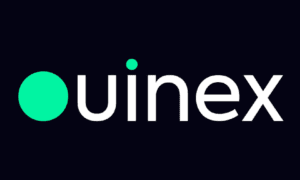Which distribution route should you pick for your app? If you’re like me, you’ve probably stared at the same question: do I ship a direct APK, build a Progressive Web App (PWA), or play the app-store game? In this article we’ll cut through the noise, weigh the pros and cons, and help you decide which path fits your goals (and your budget). If you’re promoting something or linking to a product page, you’ll also learn which option best supports discoverability and conversions.
Quick snapshot: what each option is
- Direct APKs — you host the Android package (.apk) yourself and users download and install it manually.
- PWAs — a web-first app that behaves like a native app when installed from the browser.
- App Stores — distribution through Google Play, Apple App Store, or third-party stores with listings, reviews, and in-store discovery.
Reach and discoverability: who will find you?
If you want maximum organic discovery and the “store shelf” effect, app stores win. They provide search, charts, and paid featuring opportunities — all valuable for visibility and conversions. The two major stores (Apple and Google) have distinct ASO behaviors and ranking signals you’ll want to optimize for.
PWAs rely on web SEO and social sharing. If your site already ranks well (or you’re linking from a site like himabet, a PWA can convert existing visitors into repeat users without the friction of app installs. Direct APKs give you control but almost no discoverability unless you pair them with strong marketing — people won’t stumble across your app on a virtual shelf.
User friction & install flow: how many steps?
I always ask: how far will my users go to install my product? PWAs win for the lowest friction: users visit a URL, then “Add to Home Screen.” No store approvals, no wait. App stores add friction but also trust — many users prefer the perceived safety of Play/App Store installs. Direct APKs require users to enable sideloading, which some won’t do — and that creates a conversion bottleneck.
Platform features & parity: can the app do what you need?
PWAs have come a long way: service workers, offline caching, and in many modern browsers even push notifications. But some native features, especially on iOS, can still be limited or inconsistent, though iOS web support has been improving. If you need deep OS integration (background services, full hardware access, in-app purchases), native apps distributed through stores are usually necessary.
Security and trust: protecting users and your brand
This matters a lot. App stores run automated and manual checks, roll out security updates, and remove malicious apps — all of which protect users and reduce your liability. Google’s security analysis shows sideloaded sources carry a much higher malware incidence, which is why the platform emphasizes Play protections. When you distribute direct APKs, you accept more responsibility for secure distribution and update integrity.
Cost & control: who pays and who decides?
Direct APKs give you full control — no store fees, no approval delays, and total control of updates and monetization. But that control comes with tradeoffs: you handle distribution, payments, and trust-building. App stores take commissions and have rules, but they also handle payments, refunds, and provide a trusted billing path. PWAs are the lowest-cost route to reach users across platforms but may limit monetization choices (especially on iOS).
Regulatory and market changes: watch the landscape
Big legal and platform shifts matter. Court rulings and platform policy updates (for example, battles over app-store practices) can change fees, competition, and distribution options — so what’s optimal today might shift. If you rely on a single channel, be ready to adapt.
So which should you pick?
Ask yourself:
- Do I need fast installs from existing web traffic? → PWA
- Do I need deep native features, revenue via in-app purchases, and discoverability? → App Stores
- Do I need total control, want to avoid store fees, and can handle security/updates? → Direct APKs
Often the smartest strategy: launch a PWA to capture web traffic and validate features, publish to app stores for reach and monetization, and offer direct APKs only for niche audiences or partner distribution. We’ve used approaches ourselves when we wanted fast testing plus a path to scale.
Final thoughts (and a practical tip)
I’d recommend starting with a PWA if you have strong web traffic (for example, from a site like himabet, then parallel the most important platform as a native app for deeper features and store discovery. That way you get the best of both worlds: low-friction acquisition and the trust + monetization power of app stores.































